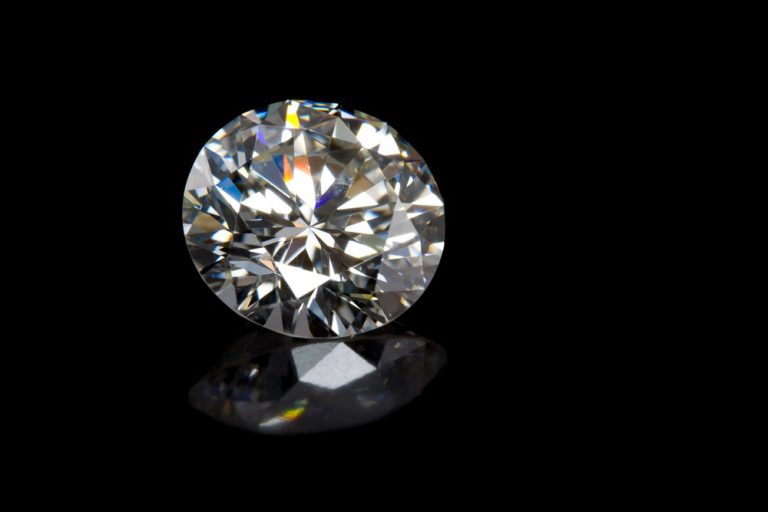“A diamond is just a lump of coal that stuck to its job.” (Malcolm Forbes)
As another popular saying goes: diamonds are women’s best friends. Indeed, it’s hard to find a woman, who wouldn’t be seduced by their brightness and colors.
Technically, it would be more correct to say “a brilliant is forever”, since diamonds are just minerals without their peculiar cut.
Let’s delve deeper into this topic.
A simple piece of carbon exposed to pressure and extreme temperatures changes its atomic structure giving life to this wonderful precious stone called “diamond”.
A diamond (from the Ancient Greek: ἀδάμας adámas, meaning “unbreakable”, “proper”, or “unalterable”) is one of the best-known and most sought-after gemstones.
Diamonds have the second most stable structure after graphite; their superlative physical characteristics in terms of hardness and thermal conductivity puts them on top of the strongest materials known to people. These excellent properties have landed this gemstone many applications in modern industry; it is widely used as industrial abrasive for cutting hard materials.
High refractive dispersion allows this gem to scatter light of various colors giving diamonds their striking appearance.
High pressure and temperature at depths between 140 and 190 km under the Earth’s mantle are the factors converting carbon into a natural diamond, its transformation can be a result of 1 thousand to 3.3 thousand (millions of years) corresponds to 75% of the age of the planet.
Volcanic eruptions are forces which often raise these minerals closer to the surface of the Earth mixed with magma.
Today, diamonds can also be artificially produced with the most modern processes with the help of high pressure and temperature.
Now let’s talk about its brilliance, which is given to this precious stone by carving it in a particular way.
Already in the year 1450 diamonds were carved with facets and symmetries.
Just about the year 1650 Vincent Peruzzi was the first to leave the diamond with its 56 facets with table and butt making a total of 58 facets that had a quadrangular shape, as a result of this carving the stone obtained greater brightness compared to other cutting forms and from that moment that was called a “brilliant cut”.
As a subsequent step in the evolution of diamond cutting was the achievement of the circular shape with a table of approximately 40-50% with respect to the diameter of the waist and a depth 65% larger, this cut was commonly called a “European old cut”.
In the year 1919 the mathematician Marcel Tolkowsky was the one who obtained a balance between these factors, using as a measure the diameter of the waist of the diamond and giving it a value equivalent to 100%, the table with a diameter between 53% and 58% (the diamond’s largest facet), the total depth of the diamond that does not exceed 60% to 61%, the height of the crown 16.2%, on an angle of 34 Ѕ degrees and the depth of the cone or pavilion 43.1%.
This cut is currently known as the “Ideal Cut”.

In the last century the “Botero” – a diamond carved with those characteristics was really very difficult to cut: most of them had variations with respect to the ideal measurements. In 1998 that it was possible to achieve a diamond cutting near the perfection, known as “Triple Ex” which means simply “triple excellence”. This of course has been possible thanks to technological advances in robotics.
Currently, the most common forms of diamond carvings are: ROUND, PRINCESS, PEAR, CUSHION, HEART, ASSCHER, OVAL, ESMERALD, MARQUISEY, and RADIANT.

The value of diamonds depends on several factors, starting with the weight that is called “carat”, through color, transparency and absence of inclusions that are also cataloged in different categories.
In the next article we will go deeper into all the features about this special stone and we will discuss examples of the most expensive and costly diamonds in the world, true miracles of nature.



